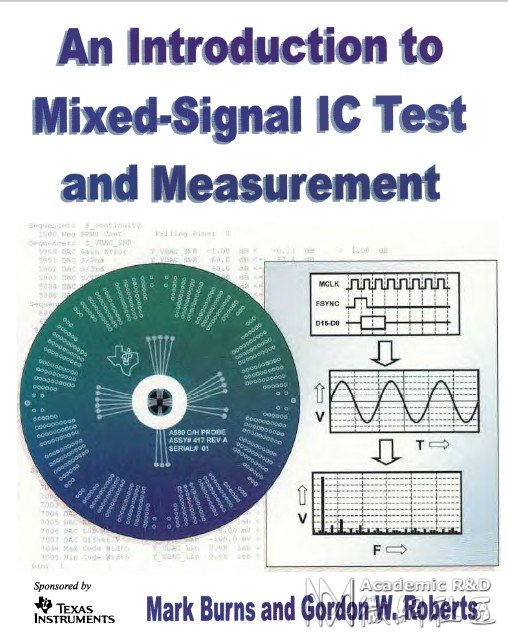
Oxford University Press
Oxford New York
Athens Auckland Bangkok Bogota Buenos Aires Calcutta
Cape Town Chennai Oar es Salaam Delhi Florence Hong Kong Istanbul
Karachi Kuala Lumpur Madrid Melbourne Mexico City Mumbai
Nairobi Paris Sao Paulo Shanghai Singapore Taipei Tokyo Toronto Warsaw
and associated companies in
Berlin !badan
Copyright @ 2001 by Texas Instruments, blcorporated
Published by Oxford University Press, Inc.
198 Madison Avenue, New York, New York, 10016
http://www.oup-usa.org
Oxford is a registered trademark of Oxford University Press
All rights reserved. No part of this publication may be reproduced,
stored in a retrieval system, or transmitted, in any form or by any means,
electronic, mechanical, photocopying, recording, or otherwise,
without the prior permission of Oxford University Press.
Library of Congress Cataloging-in-Publication Data
Bums, Mark, 1962-
An introductiont o mixed-signal IC test and measuremenIt Mark Bums, GordonR oberts
p. cm. - (Oxfords eriesin electricaal ndc omputeern gineering)
Includes bibliographical references and index.
ISBN 0-19-514016-8
I. Integrated circuits-Testing. 2. Mixed signal circuits-Testing. I. Roberts, Gordon
W., 1959- II. Title. III. Series
TK7874 .B825 2000
621.38IS-dc2I
00-042770
@体无完肤您在微网文章 An_introduction_to_mixed_signal_ic_test_and_measurem 后部附件不可见,可否更新谢谢。
